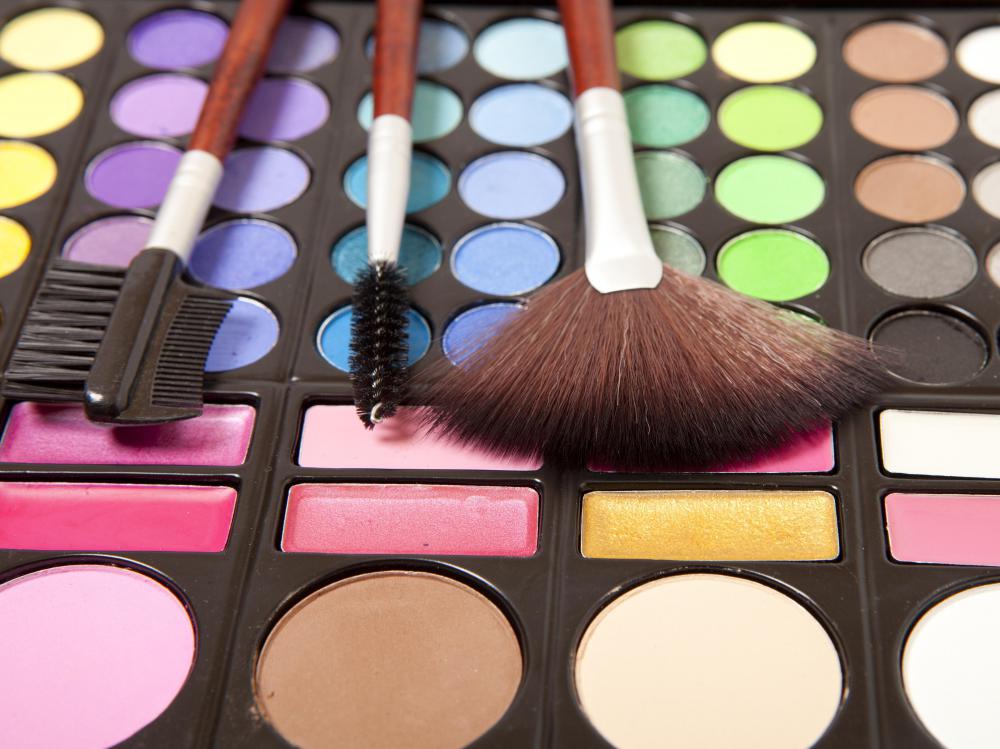At WiseGEEK, we're committed to delivering accurate, trustworthy information. Our expert-authored content is rigorously fact-checked and sourced from credible authorities. Discover how we uphold the highest standards in providing you with reliable knowledge.
How Do I Read Cosmetics Labels?
The first step in reading a cosmetics label is to recognize and evaluate its list of ingredients. To understand what ingredients a product contains, you can refer to the International Nomenclature of Cosmetic Ingredients (INCI) list. Cosmetics labels must also contain a product description that outlines specific information, including what a product is and how it is used. Your next step is to understand special terms, such as "natural" and "cruelty-free," which are commonly advertised on cosmetics labels. Lastly, you must check the product’s expiration date and note any special storage requirements.
When labeling cosmetics, manufacturers are required to list every ingredient the product contains. Each of these ingredients are listed in descending order in terms of volume. Manufactures are also required to list ingredients by their scientific name, as specified in the INCI list. Although some ingredients like fragrances can be listed in broad terms. For example, a manufacturer might choose to identify a fragrance simply as “fragrance,” which does not give the specific substance that is used.

Since most ingredients are listed by their scientific name, some are difficult to understand. To help consumers understand their cosmetics formulation, manufacturers are allowed to put important ingredients in parenthesis next to their scientific name. For instance, Shea butter will be listed as Butyrospermum parkii (Shea butter). If you do not recognize an ingredient, you can distinguish its identity by consulting the INCI list. Ingredients can also be identified by their place in the ingredients list or by recognizing certain characteristics.

An unfamiliar ingredient located at the end of the list might be a preservative. Common preservatives include Triclosan, Triclocarban, Methylisothiazolinone and Triethanolamine (TEA). Ingredients that contain the word “paraben” are also preservatives. Natural or safe cosmetics are usually free of these ingredients.
Surfactants, soaps and lubricating agents are typically found in the middle of the ingredients list. These ingredients commonly start with the letters “peg” or contain an “-eth” toward the middle of their name. One example of a commonly used surfactant is sodium laureth sulfate.
Ingredients that contain the letters “D&C” and “FD&C” are synthetic dyes. These ingredients are also usually listed toward the middle of the list. Since these dyes are synthetic, they are typically not included in natural or mineral cosmetics.
In addition to ingredients, manufacturers are required to include product descriptions on their cosmetics labels. The product description must include the manufacturer’s name, the product's name, and the product's weight or volume. It should also describe the product, usage instructions, and possible dangers. Manufacturers are allowed to list benefits, but may not make unproven claims regarding the effectiveness of their product.
In the product description or elsewhere on the label, manufactures frequently use special terms to draw attention to their products. For instance, a product might claim to be cruelty free, alcohol free, hypoallergenic or natural. Many types of makeup also claim to contain minerals or to be noncomedogenic, which means that the product will not clog pores. While many of these terms are self-explanatory, they can sometimes be a bit misleading.
For example, products that claim to be natural or contain minerals are not necessarily free of artificial ingredients. This term is often used to let consumers know that a product contains natural ingredients, not that the product is free of synthetic substances. So while you may think you are buying 100% natural designer cosmetics, you cannot know for certain unless you read the ingredients list.
The last item to look at on cosmetics labels is the expiration date. Somewhere on the label, manufacturers will list the date by which the product is best to use. They will also list special storage instructions. Many types of cosmetics expire faster in hot, damp conditions. Failure to abide by specific storage instructions may cause contamination and render certain products unusable.
AS FEATURED ON:
AS FEATURED ON:












Discuss this Article
Post your comments